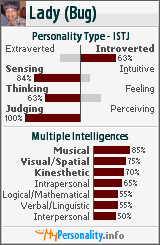
I have often times wondered why it seems to be such a chore for some folk of a certain race (and you know who you are) to appreciate and support African-American films. It always seems to me that black people are willing to go to the theater and pay good money to see not only black movies, but any movie that arouses their interest, regardless of who is in it. And, for many years, I felt that this is because black people are generally more open-minded than some other folk but, perhaps there is much more to it than meets the eye.
The great racial divide when it comes to moviegoing goes back a long, long way and the choice of the individual moviegoer was never the only reason for this split. In fact, Hollywood historically played much more of a role than I ever imagined in setting the stage for "who" went to see "what" movie, "when" they went to see it, and "where" they went to see it. The only thing I really don't understand is "why"?
The "race movie" was a film genre which existed in the United States between about 1915-1950. It consisted of films that were specifically produced for an all-black audience, featuring all-black casts. In all, approximately 500 race movies were produced during this period and of these, fewer than 100 remain in existence. Because race movies were produced outside of the Hollywood studio system, they have largely been forgotten by mainstream film historians. However, in their day, race films were very popular among African-American moviegoers and their influence continues to be felt in cinema and television that is marketed to African-Americans in the present.

Race movies were some of the first financially successful independent films. Much like early black sitcoms, race movies were most often financed by white-owned companies and scripted by white writers. Black-owned studios also existed, including Lincoln Motion Picture Company (1916–1921) and most noteably, Oscar Micheaux's, Chicago-based Micheaux Film Corporation (1918–1940). On his posters, Micheaux advertised the fact that his films were produced and scripted exclusively by blacks. Astor Pictures released several race movies as well.
The race movie vanished after the United States vs. Paramount Pictures, Inc. (or the Hollywood Antitrust Case) in 1948, which forced the separation of motion picture exhibitors and motion picture production companies. Black actors took the lead in several Hollywood major productions such as "Pinky" with Ethel Waters (1949), "Home of the Brave" with James Edwards (1949), and "No Way Out", the debut of Sidney Poitier (1950).
In order to comply with segregation, race movies in the south were screened at designated black theaters. Though northern cities were not formally segregated, race movies were generally shown in theaters in black neighborhoods. While it was extraordinarily rare for race movies to be shown to white audiences, white theaters often reserved special time slots for black moviegoers. This resulted in race movies often being screened as matinees and midnight shows. During the height of their popularity, race movies were shown in as many as 1,100 theaters around the country.
Many large northern theaters incorporated special balconies reserved for blacks. Though produced primarily in northern cities, the target audience consisted primarily of poor southern blacks and southerners who had migrated northward. Many race movies, particularly those produced by white studios, attempted to impart middle-class urban values, especially education and industriousness. Common themes included the "improvement" of the black race, the supposed tension between educated and uneducated blacks, and the tragic consequences in store for blacks who resisted bourgeois values. The most famous race movie, "The Scar of Shame", incorporated all of these themes.
Race movies typically avoided explicit depictions of poverty, ghettos, social decay, and crime. When such elements appeared, they often did so in the background or as plot devices. Perhaps most strikingly, race movies rarely, if ever, dealt with the subjects of social injustice and race relations. Not surprisingly, race movies avoided many of the popular black stock characters found in contemporary mainstream films or relegated these stereotypes to supporting roles and villains.
In particular, Micheaux went to great lengths to depict his protagonists as educated, prosperous, and genteel. Micheaux hoped to give his audience something to help them "further the race", but in doing so, he often sacrificed plausibility. Many modern black sitcoms, such as The Cosby Show, have followed a similar pattern and have encountered similar criticism. The plausibility criticisms were based on the fact that many black sitcoms take a view from New York, Chicago, or Philadelphia. They showed blacks in highrise projects and never acknowledged the fact that black doctors, lawyers, and other professional people exist throughout the United States. Many of the race movies struck an accord with people in these areas. There is ample evidence of large numbers of middle class black families in the interior of the country, if you poll the black churches.
On the other hand, black comedians such as Mantan Moreland, who had played supporting comedy roles in mainstream Hollywood films, reprised his character as the lead in such films as "Professor Creeps" and "Mr. Washington Goes To Town". Some black entertainers such as Moms Mabley or Pigmeat Markham starred in their own vehicles. They never appeared in mainstream entertainment until the late 1960s, when both of them appeared on Rowan & Martin's "Laugh-In" on television. Many black singers and bands appeared as the lead or in supporting acts in race movies, such as Louis Jordan who made three films.
Race movies are of great interest to students of African-American cinema, not only for their historical significance, but also because they showcase the talents of actors who were relegated to demeaning, stereotypical, and supporting roles in mainstream studio films. Hattie McDaniel and Clarence Muse are two of the most striking examples. A few stars from race films were able to crossover to relative stardom in mainstream films, such as Paul Robeson and Evelyn Preer. Hollywood studios often used race movies as a ready source of black talent.

Needless to say, the period of the race movie (and that term) was before my time because I wasn't born until 1958. However, I did grow up during the 1970s and, little did I know at the time, the period of the "blaxploitation movies" that I went to the theater to see (i.e. "Shaft", "Superfly", "Across 110th Street", "Coffee", "Cleopatra Jones", etc.) was merely history repeating itself but from a completely different perspective. Looking back, I see now that a few things had changed but, some things remained the same. For example, the black movies that I went to see were not restricted to a matinee or midnight showing... but, many times, these movies were only shown in a limited number of theaters across the country and that still goes on to this day. And, some theaters still discriminate when deciding what movie titles are placed on the marquee based on the racial makeup of the area surrounding its location.
It is truly unfortunate that, just like everything else in this country which is "rooted and grounded" in race, even something as simple and innocent as going to the movies was designed to set the stage for racial division before anyone had a chance to make up their own mind. It appears that we were all nudged or pushed (take your pick) by Hollywood into our opposite corners of the movie ring and that is where some folk have remained since 1915! Unbelievable! If this country ever expects to move past race, we all need to learn how to open our minds to something that is a little different from what we are accustomed to and not be afraid to step outside of our comfort zone.
As human beings, when we are faced with a difficult challenge, sometimes it is necessary to take "baby steps" until we are sure of ourselves and that the outcome will not pose us any threat or harm. Well, why not start with a movie? What's the worst that can happen? Why not make your next movie selection based on whether or not the subject matter is of interest to you rather than the skin color of the people in it, as you were setup to do back in 1915? Sometimes, I feel like the only progress that has really been made over the years is that African-American films are no longer commonly referred to as "race movies"... and, just for the record, the term "blaxploitation movies" wasn't much better.




































+of+JBHS+30th+Reunion.jpg)


































































 🕊 Rest in Paradise Dad
🕊 Rest in Paradise Dad 🕊 Rest in Paradise Mom
🕊 Rest in Paradise Mom



















1 comment:
Roz, this was a treatise. You could have used this thesis for a graduate paper. Thanks for the great information about how these movies came to be. As a child I remember being relegated to the balcony because of segregation when we visited our grandmother in FLA. Your mother-in-law took us to see the movie "The Wolfman" one summer in the late 50s and told us that we sat in the balcony to SEE better, not because we COULDN'T sit on the first level. Because we were kids, we believed her and had a good time sitting on benches, instead of the individual soft bottomed chairs downstairs. Those soft chairs were "bad for the back." As I grew older and began to understand the ways of the world I was glad to have been protected from that form of discrimination. I hope you got a chance to see the movie Precious. Now that movie exposed the violence of abuse from generation to generation. I don't think Micheaux would have appreciated airing the "dirty laundry."
Great writing!! I hope this essay appears in the book!!
Post a Comment